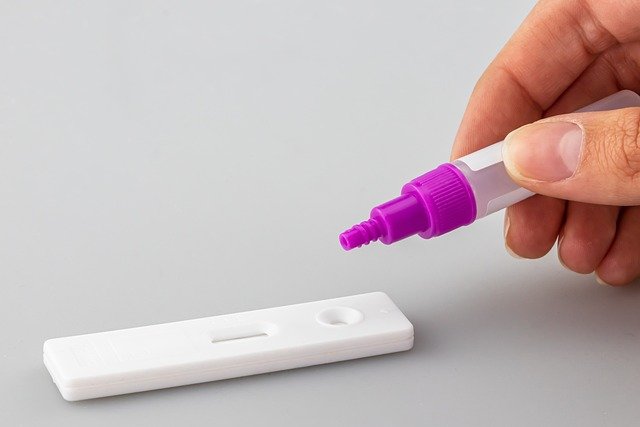Comprehensive Overview of Liposuction in Canada
Liposuction is a surgical procedure aimed at removing excess fat from specific areas of the body. In Canada, this procedure is gaining attention for its potential to enhance body contours. Individuals considering liposuction should be informed about the process, expected outcomes, and important recovery guidelines to ensure a safe and effective experience.

Liposuction continues to be among the most popular cosmetic surgical procedures performed across Canada. This body contouring technique targets stubborn fat deposits that persist despite healthy diet and regular exercise. While not a weight loss solution, liposuction offers Canadians a way to refine body proportions and address specific areas where fat accumulation proves resistant to lifestyle modifications. The procedure has evolved considerably since its introduction, with Canadian clinics now offering several advanced variations to meet diverse patient needs and expectations.
Understanding the Liposuction Procedure and Its Benefits
Liposuction involves the surgical removal of subcutaneous fat through a cannula (a thin tube) inserted through small incisions in the skin. The surgeon manipulates this instrument to break up fat deposits before suctioning them out. In Canada, several liposuction techniques are commonly practiced, including tumescent liposuction (where a solution of saline, lidocaine, and epinephrine is injected to minimize bleeding and discomfort), ultrasound-assisted liposuction (which uses ultrasonic energy to liquefy fat cells), and laser-assisted liposuction (employing laser energy to break down fat).
The benefits of liposuction extend beyond mere fat removal. Patients often experience improved body proportions and contours that better reflect their overall physique. The procedure can effectively target areas like the abdomen, thighs, buttocks, arms, and chin that may not respond well to traditional weight management approaches. Additionally, many patients report increased confidence and satisfaction with their appearance following recovery. For some individuals with conditions like lipedema, liposuction may also offer therapeutic benefits beyond cosmetic improvements.
Factors to Consider Before Undergoing Liposuction in Canada
Canadian patients considering liposuction should first ensure they are appropriate candidates for the procedure. Ideal candidates maintain a stable weight within 30% of their ideal body weight, possess good skin elasticity, and have realistic expectations about outcomes. Those with significant health concerns like heart disease, diabetes, or compromised immune function may face higher risks and require additional evaluation. Smoking status also impacts candidacy, as tobacco use can significantly impair healing.
Selecting a qualified surgeon represents another crucial decision point. In Canada, prospective patients should seek board-certified plastic surgeons with specific training and extensive experience in liposuction procedures. Provincial medical regulatory authorities maintain directories of certified practitioners, and many surgeons hold memberships in professional organizations like the Canadian Society of Plastic Surgeons or the Canadian Society for Aesthetic Plastic Surgery, indicating adherence to established standards of practice and ongoing education.
Cost considerations also factor prominently in pre-procedure planning. Liposuction in Canada typically ranges from $3,000 to $8,000 per treatment area, with variation based on geographic location, surgeon expertise, facility fees, and the complexity of the procedure. Most provincial health plans classify liposuction as cosmetic and therefore do not provide coverage, though exceptions exist for medically necessary procedures addressing conditions like lipedema.
| Provider Region | Average Cost (Single Area) | Typical Facility Type |
|---|---|---|
| Greater Toronto | $4,500 - $7,500 | Private Clinic |
| Vancouver/BC | $4,000 - $8,000 | Private Surgical Center |
| Montreal/Quebec | $3,500 - $6,000 | Private Clinic |
| Calgary/Alberta | $3,800 - $7,000 | Private Surgical Center |
| Halifax/Maritimes | $3,000 - $5,500 | Hospital or Private Clinic |
Prices, rates, or cost estimates mentioned in this article are based on the latest available information but may change over time. Independent research is advised before making financial decisions.
Post-Procedure Care and Recovery for Liposuction Patients
Recovery from liposuction follows a predictable timeline for most Canadian patients. The immediate post-operative period involves wearing compression garments to reduce swelling and help the skin conform to new contours. These specialized garments typically remain in place for several weeks following surgery. Patients can expect moderate discomfort, bruising, and swelling that gradually diminish over time. While some return to sedentary work within a few days, full recovery—including resumption of strenuous activities—generally requires 4-6 weeks.
Proper wound care proves essential during recovery. Canadian surgeons typically provide detailed instructions for maintaining incision sites, recognizing signs of infection, and managing drainage if present. Follow-up appointments allow for professional monitoring of healing progress and addressing any complications. Patients should adhere strictly to these appointments to ensure optimal outcomes.
Long-term results from liposuction become apparent as swelling fully subsides, usually within 3-6 months. The permanence of these results depends significantly on lifestyle choices. Fat cells removed during liposuction do not regenerate; however, remaining fat cells can enlarge if patients gain significant weight. Maintaining results therefore requires commitment to healthy eating patterns and regular physical activity. Most Canadian surgeons emphasize this point during pre-operative consultations to establish realistic expectations.
Potential Risks and Complications of Liposuction
While generally safe when performed by qualified professionals, liposuction carries risks like any surgical procedure. Common side effects include temporary numbness, bruising, swelling, and discomfort. More serious complications, though rare, can include infection, asymmetry, contour irregularities, fluid accumulation, and adverse reactions to anesthesia. Canadian surgical facilities maintain strict protocols to minimize these risks through proper patient screening, sterile techniques, and comprehensive pre-operative preparation.
Specific risk factors increase complication potential, including multiple procedures performed simultaneously, excessive fat removal, and certain pre-existing health conditions. Canadian surgeons typically limit fat removal to safe thresholds—generally under five liters—to reduce risks associated with fluid shifts and surgical trauma. They also carefully evaluate patients’ medical histories to identify contraindications or conditions requiring additional precautions.
Emergent complications, while uncommon, demand immediate attention. Canadian patients receive detailed guidance about warning signs requiring prompt medical evaluation, including excessive pain, fever, unusual drainage, or breathing difficulties. Access to emergency care represents an important consideration when selecting both surgeon and facility, as immediate intervention capability significantly impacts outcomes when complications arise.
Technological Advances in Canadian Liposuction Practices
Canadian cosmetic surgery centers increasingly adopt innovative technologies that enhance precision and potentially improve patient outcomes. High-definition liposuction employs specialized cannulas and techniques to create more defined musculature appearance, particularly popular for abdominal contouring. Power-assisted liposuction utilizes mechanical vibration to facilitate fat removal with potentially less trauma to surrounding tissues. These advanced approaches may offer benefits including reduced operative time, improved contouring capabilities, and possibly shorter recovery periods.
Non-surgical fat reduction alternatives have also emerged across Canadian aesthetic practices. These include cryolipolysis (fat freezing), radiofrequency treatments, and injection lipolysis. While these options typically deliver more modest results than traditional liposuction, they appeal to patients seeking less invasive approaches with minimal downtime. Canadian practitioners often discuss these alternatives during consultations to help patients select interventions best aligned with their goals, health status, and recovery preferences.
This article is for informational purposes only and should not be considered medical advice. Please consult a qualified healthcare professional for personalized guidance and treatment.




